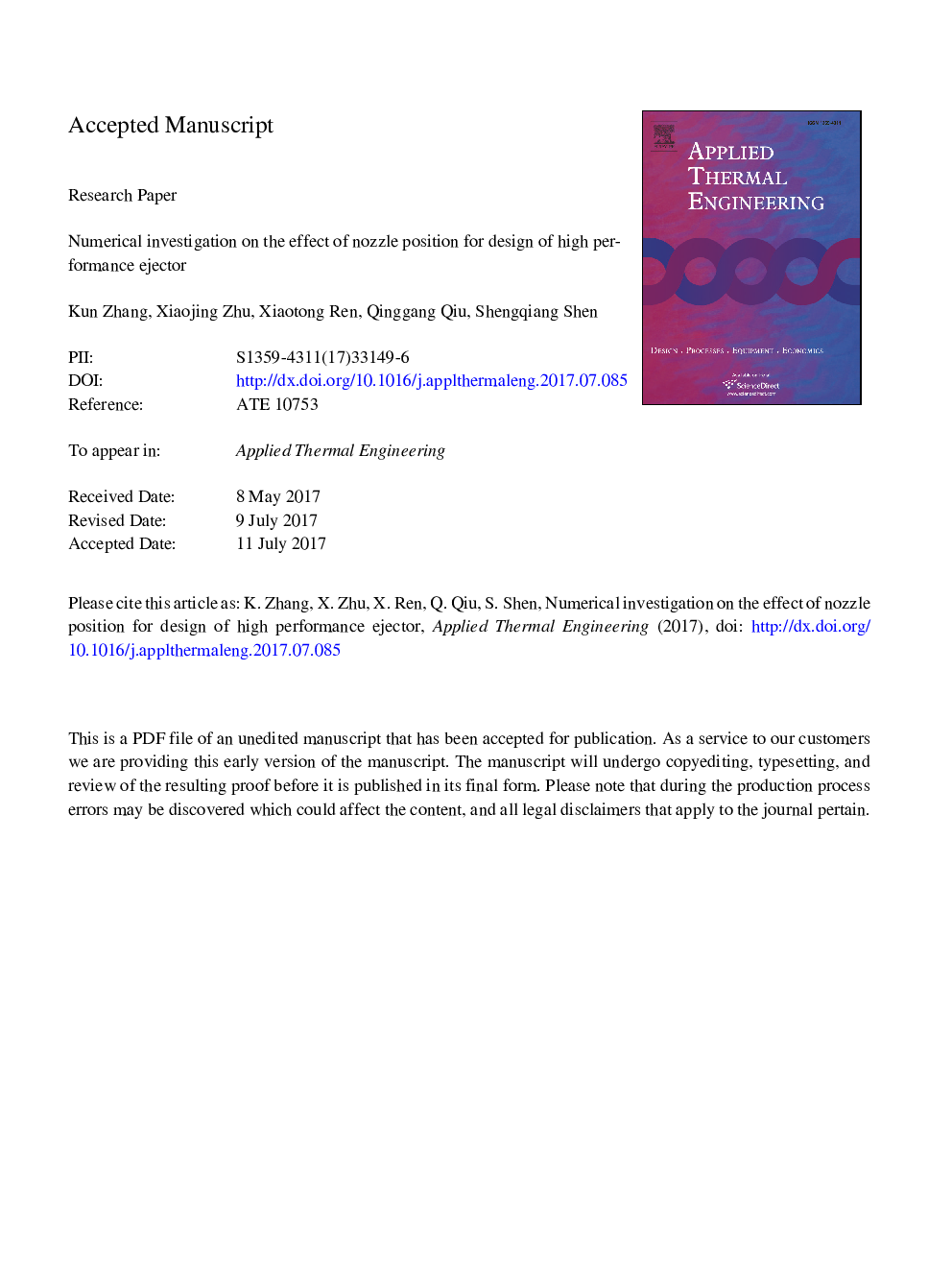| Article ID | Journal | Published Year | Pages | File Type |
|---|---|---|---|---|
| 4990464 | Applied Thermal Engineering | 2017 | 20 Pages |
Abstract
Recovering and utilizing low grade heat, such as industrial waste heat, geothermal energy and solar energy, is a significant, compelling and promising way to solve the global energy-related challenges sustainably. The ejector, as an energy recovering device, is popularly utilized in many fields like power, desalination, refrigeration, petroleum refining, food and paper industry, and even nuclear plant. An appreciation of its flow and heat transfer mechanism can be harnessed to propose improved designs for more efficient systems, which would greatly enhance their economic and environmental potential. The established numerical model achieved an agreement between experiment and simulation of within 5% errors, around the ejector design point. A version of k-ε RNG turbulence model and R600a working fluid was employed in this paper to investigate the effect of nozzle position on entrainment ratio, pressure lift ratio and the performance of the ejector. Based on the ejector model, there is an optimal nozzle position of 6 mm for a given operating conditions and fixed geometries of this designed ejector, which contributes the highest entrainment ratio and performance of the ejector. A higher entrainment ratio requires more suction flow mass and costs more energy, and consequently, introduces relatively limited pressure lift.
Related Topics
Physical Sciences and Engineering
Chemical Engineering
Fluid Flow and Transfer Processes
Authors
Kun Zhang, Xiaojing Zhu, Xiaotong Ren, Qinggang Qiu, Shengqiang Shen,
